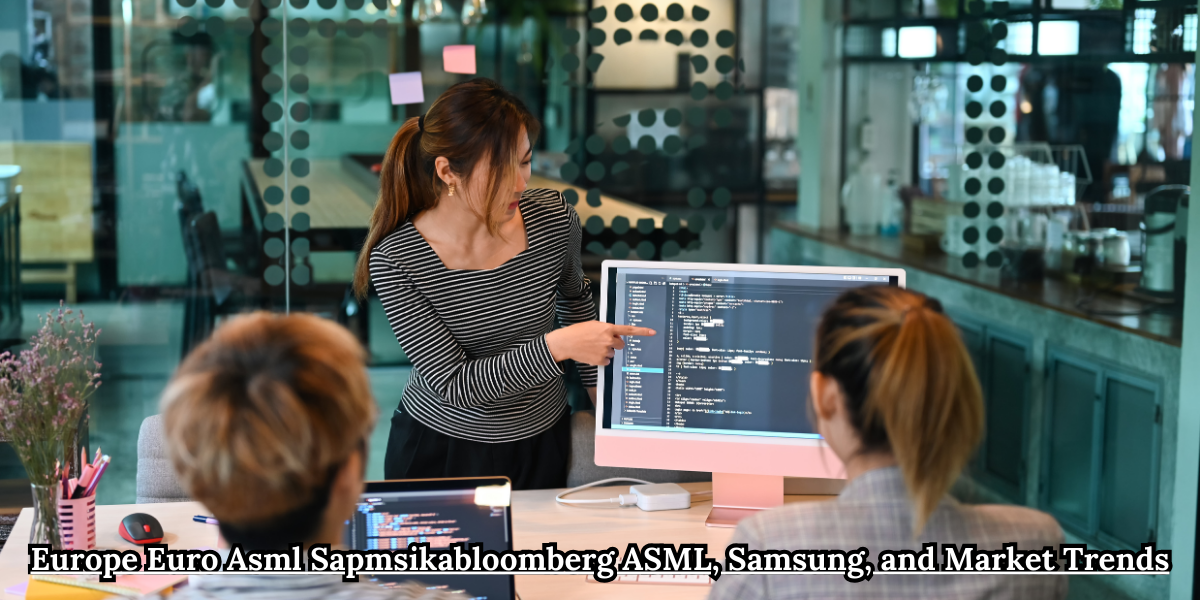
The semiconductor industry stands as a cornerstone of modern technology, driving advancements across various sectors. In Europe, companies like ASML have been pivotal in shaping this landscape. This article delves into the intricate relationships between European semiconductor giant ASML, South Korean conglomerate Samsung, and the broader market dynamics, including currency fluctuations and strategic investments.
ASML Europe’s Semiconductor Powerhouse
Company Overview
ASML Holding NV, headquartered in Veldhoven, Netherlands, is renowned for producing advanced lithography machines essential for semiconductor manufacturing. These machines are critical for creating the intricate patterns on silicon wafers that form the foundation of microchips.
Market Position and Financial Performance
In mid-2024, ASML’s market capitalization soared, briefly positioning it as Europe’s second-largest company, surpassing luxury conglomerate LVMH with a valuation of approximately €377 billion. This surge was attributed to the anticipated delivery of ASML’s high-NA extreme ultraviolet (EUV) machines to major clients like Taiwan Semiconductor Manufacturing Co.
However, the latter part of 2024 presented challenges. ASML experienced a significant stock decline, with shares plummeting over 15% due to a premature release of quarterly results that revealed a slowdown in orders. This downturn led to SAP SE overtaking ASML as Europe’s most valuable technology firm.
Read Also: Photeeq Lens Flare Guide to Stunning Light Effects
Samsung’s Strategic Investments in ASML
Equity Stake Acquisition
In 2012, Samsung Electronics Co. acquired a 3% stake in ASML for €503 million. This investment aimed to secure access to ASML’s cutting-edge lithography technology, ensuring Samsung’s competitiveness in producing advanced semiconductors.
Collaborative Research and Development
The partnership between ASML and Samsung deepened in December 2023 when both companies announced a joint investment of 1 trillion won ($760 million) to establish a research facility in South Korea. This center focuses on developing next-generation semiconductor processing technology utilizing ASML’s EUV equipment.
Read Also: Unlocking Tax Relief Benefits through Charitable Donations in Singapore
Market Dynamics and Challenges
Energy Consumption in Semiconductor Manufacturing
The production of semiconductors is energy-intensive. In 2024, reports highlighted that chip manufacturing consumed energy on par with entire countries. Advanced lithography equipment, such as ASML’s EUV machines, require approximately one megawatt of electricity per machine. This substantial energy demand underscores the industry’s need for sustainable practices.
Economic Fluctuations and Their Impact
The semiconductor sector is highly sensitive to global economic shifts. In late 2024, ASML adjusted its revenue forecasts for 2025, citing delays in chip plant constructions and a cautious recovery in demand. CEO Christophe Fouquet projected that the industry’s recovery would extend “well into 2025.
Read Also: Accurate Online Property Valuation: Easy, Fast and Reliable Service
The Role of Currency The Euro’s Influence
As a European entity, ASML’s financial performance is influenced by the euro’s exchange rate. Fluctuations in the euro can impact the company’s profitability, especially when dealing with international clients and suppliers. A stronger euro can make ASML’s products more expensive for foreign buyers, potentially affecting sales.
Future Outlook
Despite recent challenges, the long-term prospects for ASML and the European semiconductor industry remain promising. The continuous demand for advanced chips, driven by sectors like artificial intelligence and data centers, ensures a steady market for cutting-edge lithography equipment. Collaborations, such as the one between ASML and Samsung, highlight the industry’s commitment to innovation and resilience.
Read Also: MyLittleLilly.com Complete Guide to Technology and Social Media Trends
FAQs About Europe Euro Asml Sapmsikabloomberg
Q1: What is ASML’s primary business?
A1: ASML specializes in manufacturing advanced lithography machines used in semiconductor production. These machines are essential for etching intricate patterns onto silicon wafers, forming the basis of microchips.
Q2: How has Samsung collaborated with ASML?
A2: Samsung acquired a 3% stake in ASML in 2012 to access its advanced lithography technology. In 2023, both companies announced a joint investment to establish a research facility in South Korea, focusing on next-generation semiconductor processing technology.
Q3: What challenges has ASML faced recently?
A3: In late 2024, ASML experienced a significant stock decline due to a slowdown in orders and adjusted its revenue forecasts for 2025, citing delays in chip plant constructions and a cautious recovery in demand.
Q4: How does the euro’s fluctuation impact ASML?
A4: As a European company, ASML’s financial performance is influenced by the euro’s exchange rate. A stronger euro can make its products more expensive for international clients, potentially affecting sales.
Q5: What is the significance of ASML’s EUV machines?
A5: ASML’s Extreme Ultraviolet (EUV) lithography machines are crucial for producing advanced semiconductors with smaller, more efficient components. These machines enable the manufacturing of cutting-edge chips used in various high-tech applications.
Conclusion
The European semiconductor industry, with key players like ASML at its helm, continues to navigate a complex landscape marked by technological advancements, strategic collaborations, and market fluctuations. While challenges persist, the industry’s commitment to innovation and resilience positions it well for future growth.